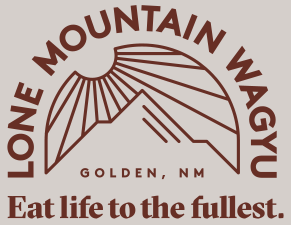
Though many of people probably haven't had the pleasure of tasting Kobe beef, it's a name we're all familiar with. The name is synonymous with gourmet quality, which is why so many restaurants and chefs around the world are willing to pay top dollar to prepare and serve it. The downside of Kobe? It only comes from Japan, there's relatively very little of it, and it’s very expensive.

A5 Kobe from Japan

100% Fullblood Wagyu from Lone Mountain Wagyu, USA
What you may not be so familiar with is Wagyu. But while it may not have the same name recognition as Kobe beef, Wagyu beef possesses the same genetics and qualities as Kobe beef. Best of all? We're producing it right here in the U.S. In fact, All Kobe IS Wagyu. But NOT all Wagyu is Kobe.

So, what's the difference between these two great meats?
Kobe
For cattle and the beef that comes from them to be considered Kobe, they have to meet some very specific requirements (and we mean specific!).
First and foremost, only cattle from a certain Wagyu breed—Japanese Black or Kuroushi—bred in a certain province of the country—Tajima—in a certain prefecture or region—Hyogo—can even be considered Kobe.
The cows are slaughtered in appointed slaughterhouses. From there, everything about the meat is subject to grading and measuring, from the amount of meat produced from a single animal, to the color and brightness, firmness and texture, luster and quality, and marbling (more on this coming soon in a future blog post). Only the best meat will be certified Kobe, and it will all be marked with an official seal and identification number that allows someone to track a piece of meat back to the animal it came from!

Until recently, export of Kobe beef was banned, meaning the only place you could try it was in Japan. Since the ban was lifted in 2012, Kobe can be found in some top restaurants around the world, but it's still not common. Each year, only a few thousand animals are certified Kobe and less than 10% is exported out of Japan, making it very rare.
Wagyu
A good comparison to the difference between Wagyu and Kobe is Champagne and Sparkling Wine. Unless it's made from local grapes, using a specific method and in the Champagne region of France, it's Sparkling Wine. It's the same with Wagyu and Kobe!

Wagyu is a Japanese word that literally translates to “Japanese (wa) Cow (gyu).” Make sense? All of the cattle in Japan are Wagyu, but only a select few are Kobe.
Wagyu can be used to describe any of the four Japanese breeds of cattle: Black, Brown, Poll, and Shorthorn. Here in the U.S., Wagyu can refer to different classifications of cattle that have either been crossbred with other cattle breeds at varying degrees or that are purely Wagyu cattle.

At Lone Mountain Wagyu we exclusively raise cattle that are 100% Fullblood. This means they are DNA-Certified directly to their Japanese lineage, sharing all the same genetics with their Japanese ancestors, with none of the animals in their lineage having ever been crossbred.
What makes Wagyu beef so good?
Cattle in Japan were originally used as draft animals, so they had to be strong and have good endurance in order to do the jobs required of them. This endurance and energy was a result of increased intra muscular fat (IMF), and that is part of what makes Wagyu beef so delicious!
Intramuscular fat leads to what is known in a steak as marbling, delicate stripes and patterns of fat mixed in with the meat. The marbling in Wagyu, which permeates the beef and carries rich flavors and melt-in-your-mouth quality, is higher in monounsaturated fats, omega-6 and omega-3 fatty acids, and lower in cholesterol than your typical beef. All of this leads to tender meat with a rich flavor that isn’t found in conventional cattle. Wagyu has rich, earthy flavors; the taste is commonly described as buttery, and slightly sweet. While they are very similar, US Wagyu, even Fullblood Wagyu which is so rich in marbling, rarely if ever accomplishes the dense marbling of a Japanese A5 (the highest rating). The marbling of US Wagyu is more balanced with a bright red meat, offering a balance of dynamic flavor and luxurious texture that is more along the lines of what we are used to in a steak.
By contrast, in Japan, the marbling in a serving of A5 Kobe is so fine and the amount so high, that the meat can appear to be a light pink or even white! The meat is so rich that servings are only a few ounces; you wouldn't be able to handle a whole steak!

Buying meat in the store, you're usually eating USDA Choice or Select meats, and most restaurants (even the nice ones) serve USDA Prime or Crossbred Wagyu. If you're looking for the real deal, make sure to look for identification of 100% Fullblood or, if it's imported from Japan, direct Japanese grading reference and certification.
Want more info on what Wagyu is? Check our our infographic!






